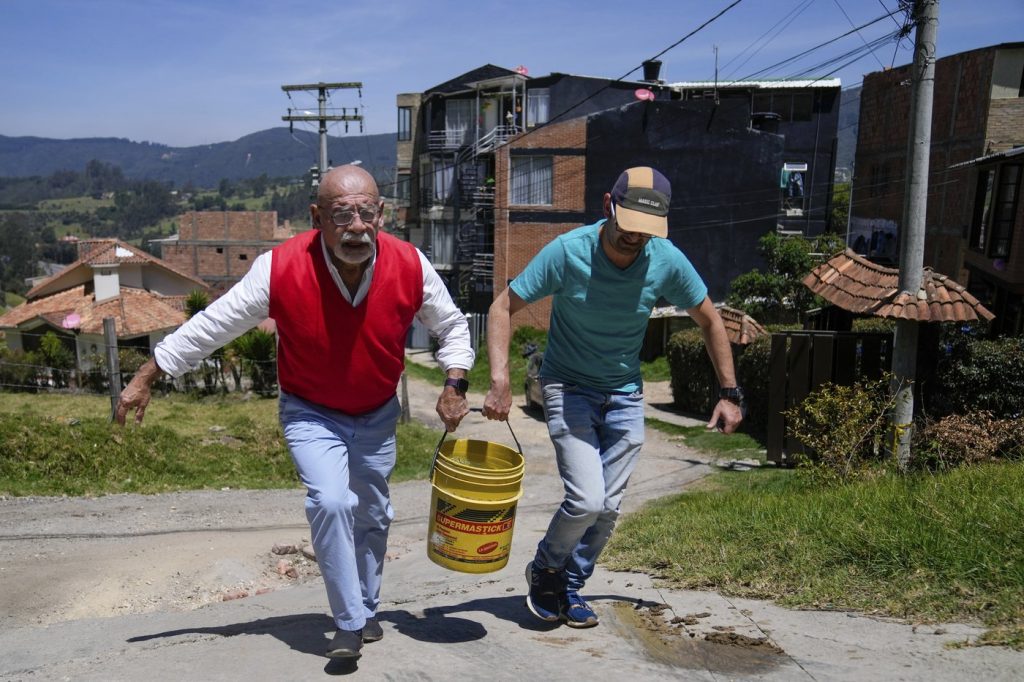BOGOTA, Colombia (AP) — Bogotá, Colombia's capital, historically known for its steady rainfall and abundance of water, has faced an unprecedented water scarcity crisis. This situation has arisen due to a relentless drought that drained the city's reservoirs to historic lows. A year ago, the authorities instituted water rationing for the first time in over four decades, impacting more than 8 million residents in the city and surrounding municipalities.
The rationing involved shutting off water supplies every nine days for 24 hours, prompting households and businesses to adapt by implementing measures such as storing water and reducing daily consumption. On Friday, Bogotá's mayor, Carlos Fernando Galan, announced that the water rationing would come to an end on Saturday, attributing the resolution of the crisis to improved rainfall, effective conservation efforts, and the expansion of a water treatment plant that has decreased demand on the reservoirs.
Mayor Galan acknowledged the difficulties that the rationing imposed on local residents, emphasizing the significant impact it had on their quality of life. This year of water rationing serves as a stark reminder of how climate extremes are reshaping urban environments and acts as a cautionary tale for other cities experiencing increased water stress due to rising global temperatures.
Bogotá's plight is not isolated; other major cities like São Paulo in Brazil and Cape Town in South Africa have also faced severe water shortages as a result of drought conditions. Gregory Pierce, director of the Human Right to Water Solutions Lab at UCLA, explained that many large cities, particularly those that have rapidly developed in the last century, have depleted their easy access to water sources. With climate change further complicating the situation, the opportunities to secure new water sources have diminished.
Experts warn that the issues of drought-induced water scarcity will likely worsen unless cities adopt sustainable water practices and invest in long-term infrastructure upgrades. Charles Wight, research director at Water Witness, highlighted that the current scarcity is "likely to be exacerbated in the future" unless significant changes are made.
For Bogotá resident Lidia Rodríguez, the water crisis felt more like a punishment than a temporary inconvenience, stating, "In my 60 years, I’ve never lived through anything like this. We just want it to end." As a response to the shortage, she has begun collecting rainwater and purchasing bottled water for essential uses. Unlike energy, which can be sourced from renewable options like solar or wind, alternatives for water supply are limited.
According to Pierce, the first step in addressing the situation is to reduce demand. He noted that water rationing and fears about supply depletion are becoming increasingly common phenomena for major cities worldwide. In Bogotá, officials have undertaken public education campaigns to promote conservation, including a campaign that advised residents to "shower together" to save water. Additionally, the city is now examining its groundwater potential as a new resource, having previously relied almost exclusively on rain-fed reservoirs.
Looking ahead, Christopher Gasson, head of Global Water Intelligence, warned that Bogotá must prepare for the frequency and intensity of extreme droughts to increase significantly in the coming years. He stressed that without substantial investment, it will be virtually impossible for the city to effectively manage its water resources.










